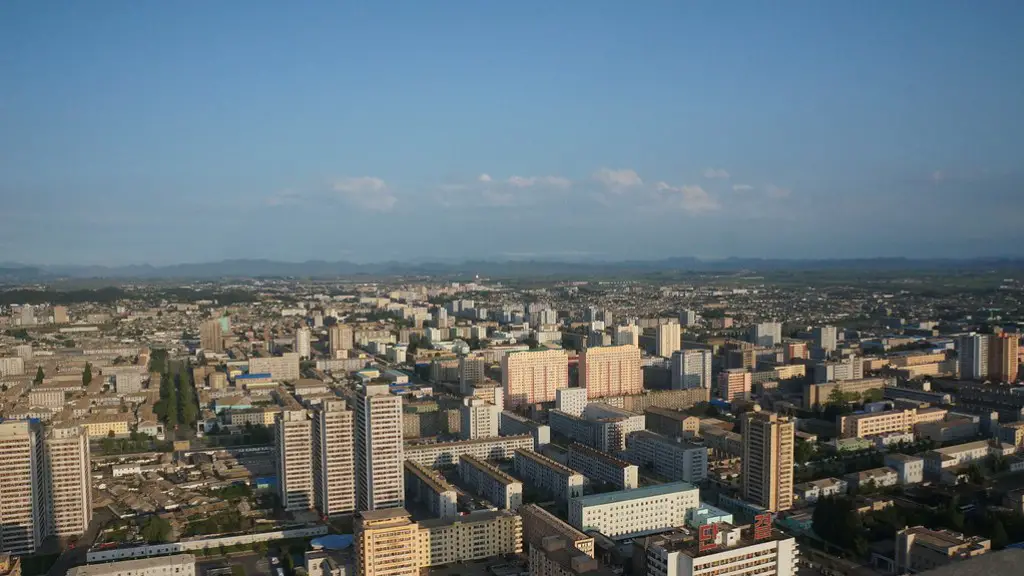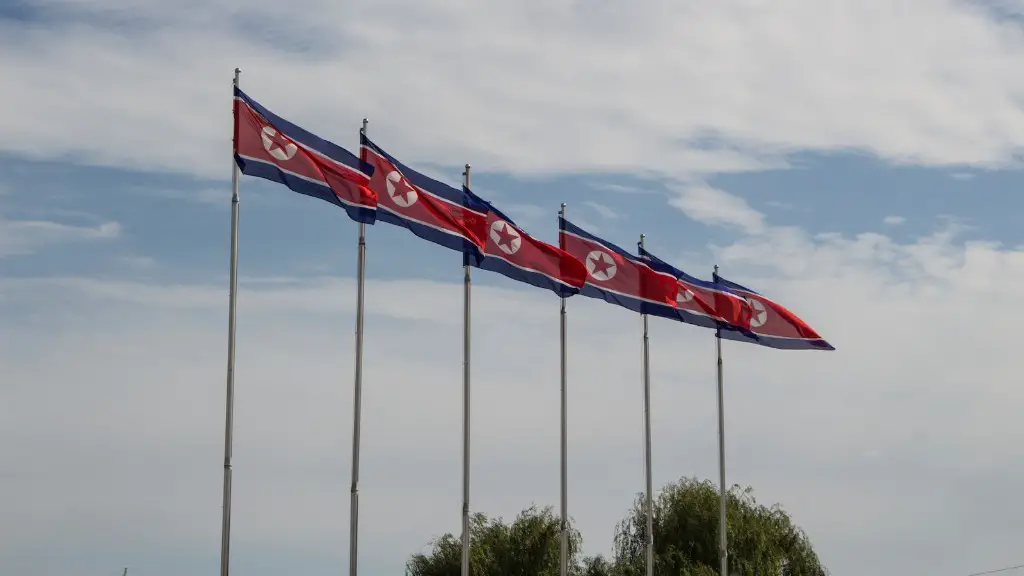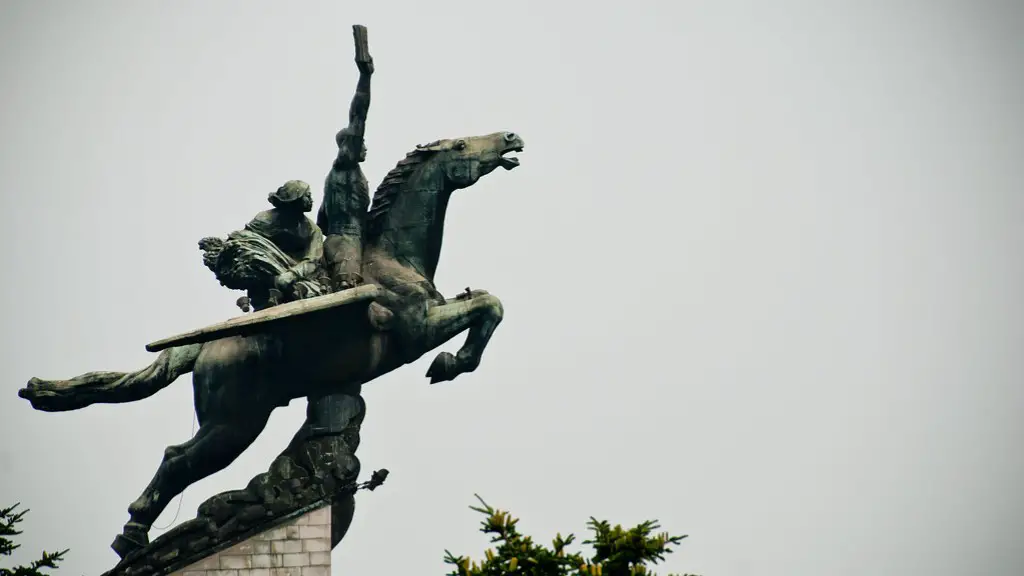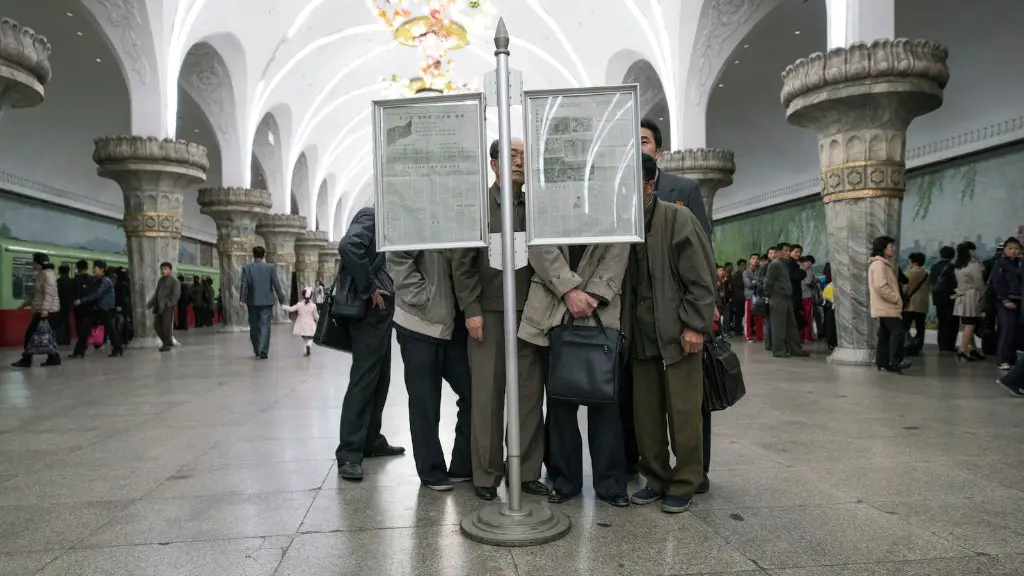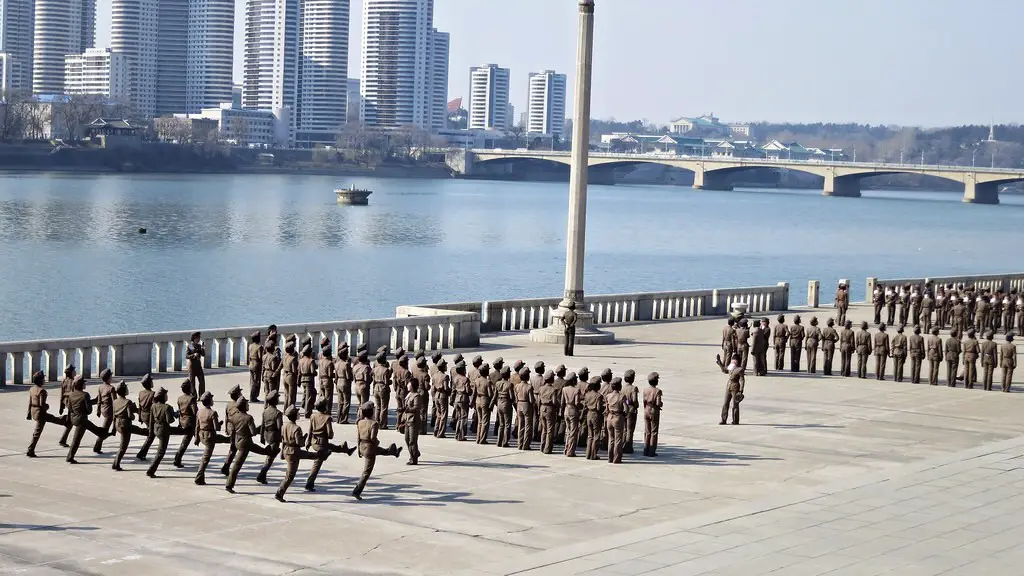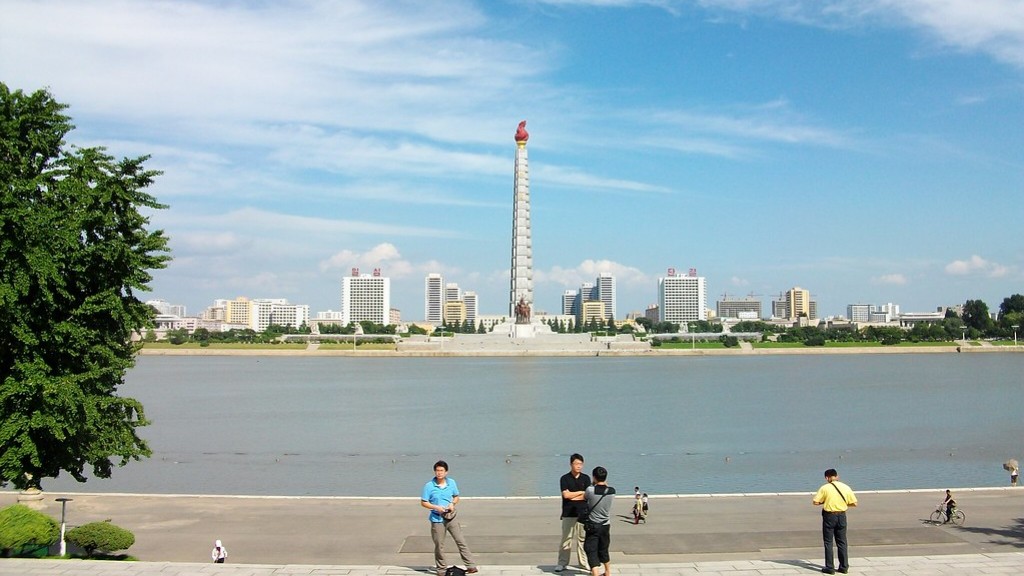Propaganda & Media Control
North Korea is one of the most isolated and secretive countries in the world, and in order to control its population, the Kim government has imposed a number of strict regulations. One of these is the control of the media. The media in North Korea is heavily censored, and the only news the people are allowed to hear is that which has been approved by the government.
The media in North Korea is controlled via several methods, such as broadcasting only state-approved content and opinions, banning the spread of foreign media, and preventing access to the internet. Television is heavily regulated, with only selected programs approved by the government airing on state-run channels. Newspapers, magazines and radio stations also face tight restrictions and censorship.
The media is a powerful tool in the hands of the Kim government, as it uses it to spread its propaganda. Propaganda has become an essential tool for maintaining power, as it allows the government to influence the population. Propaganda is used to rally support for the government, to encourage national pride and to censor negative news and opinions about the state and its leaders.
Propaganda is also used to manipulate public opinion and shape the public’s thoughts and beliefs. The government has strict guidelines for what can and cannot be said or broadcasted, and it is not uncommon for people to be arrested for speaking out against the state or its leaders.
The government also uses surveillance to keep tabs on its citizens. Surveillance cameras are present in public areas, and citizens are often monitored by state security forces. The government also has a vast network of informants and agents who are tasked with monitoring and reporting any suspicious activities.
Furthermore, the government has strict laws and punishments in place for anyone who is perceived to be a threat to the state or its leaders. The penalty for any form of dissent is often harsh, ranging from imprisonment to death.
Social and Economic Control
In addition to controlling its citizens through media manipulation and surveillance, the North Korean government also controls its people through its social and economic policies. North Korea is a highly centralized state, and the government is in full control of the economy. The state restricts the distribution of food and other essential resources to keep its citizens reliant on the state for their survival.
The government also keeps tight control over travel, as it does not allow citizens to freely move between cities and towns. Movement requires approval from the government, and citizens are subject to strict scrutiny when traveling. The government also enforces a strict curfew, and anyone found outside after the allowed hours can be arrested and punished.
The government also keeps tight control over its citizens’ education. The curriculum is heavily influenced by the state and is designed to promote loyalty and obedience to the Kim regime. Students are taught to respect and revere the state, to conform to its values and to view the government in a positive light.
Furthermore, the government enforces strict dress codes. Citizens are expected to dress in traditional Korean clothing, and those who are seen wearing western clothing are immediately reported to the authorities.
The government also monitors religious activities and does not allow citizens to practice any form of religion that does not conform to the state’s beliefs and teachings. Any public displays of faith are prohibited and can result in harsh punishments.
Fear Tactics
Fear is a powerful tool used by the North Korean government to maintain control. The government instills fear in its citizens by using public humiliation and intimidation, as well as by threatening them with imprisonment and death. Fear is used to keep people from speaking out against the state or its leaders, or from even discussing public affairs.
The government also uses the threat of violence to keep people in line. Citizens are made aware of the consequences of any form of dissent or criticism, and they know that they could face punishment in the form of imprisonment, torture or even death.
Another tool used to instill fear is the heavy presence of the military and other security forces. Military bases and checkpoints are common across the country, and citizens know that they could be subject to random searches, arrests or interrogations.
Brainwashing & Indoctrination
Brainwashing and indoctrination are also a vital tool in the North Korean government’s arsenal. The government seeks to indoctrinate citizens by instilling loyalty and devotion to the state and its leaders, and by promoting the state-sponsored ideology. Educational materials are designed to extol the virtues of the state, and the government encourages people to view the government in a positive light.
The government also uses the media and propaganda to brainwash citizens. Films, television shows and books are carefully crafted to promote the state’s ideals and to suppress any dissent or criticism. State-run newspapers, magazines and radio programs are also used to influence public opinion and shape people’s thoughts and beliefs about the state and its leaders.
The government also uses public events and rallies to brainwash citizens. Rallies and parades are often held to display the government’s power and loyalty, and to extol its values and ideals.
Family Control
North Korea also maintains control of its population by controlling families. Families are seen as the basic building block of society, and the government uses them to maintain control. The government uses family ties to encourage loyalty to the state and its leaders, and to discourage any form of dissent or criticism.
The government also uses the family to monitor its citizens. All families are expected to report any suspicious activities or behavior to the authorities, and those who fail to do so can be punished. Families are also held responsible if any of their members are convicted of a crime.
Furthermore, the government uses the family to limit access to foreign media and information. The government is aware that family members are often the source of information, so they employ tactics such as curfews, limits on travel and restrictions on communication to limit exposure to foreign ideas.
Cultural Atomization
The North Korean government also practices cultural atomization, or the act of breaking down society into its individual components in order to control them. The government does this by creating a hierarchy within society, and by emphasising the importance of loyalty to the state and its leaders over any other form of loyalty or identification.
The government also creates divisions between the workers, peasants and intellectuals. These divisions serve to limit any form of solidarity and discourage any effort to form groups or organizations that could challenge state power.
The government also enforces a strict policy of collectivism to encourage people to look to the state for guidance and protection, and to view the state in a positive light. As such, any form of individualism is frowned upon, and those seen to be encouraging it are subject to punishment.
Cultural atomization is a vital tool used by the North Korean government to maintain control of its population. By breaking down society into individual components, the government is able to keep its citizens in line by limiting their access to information and foreign influences, and by creating a strict hierarchy in which loyalty and obedience to the state is paramount.
